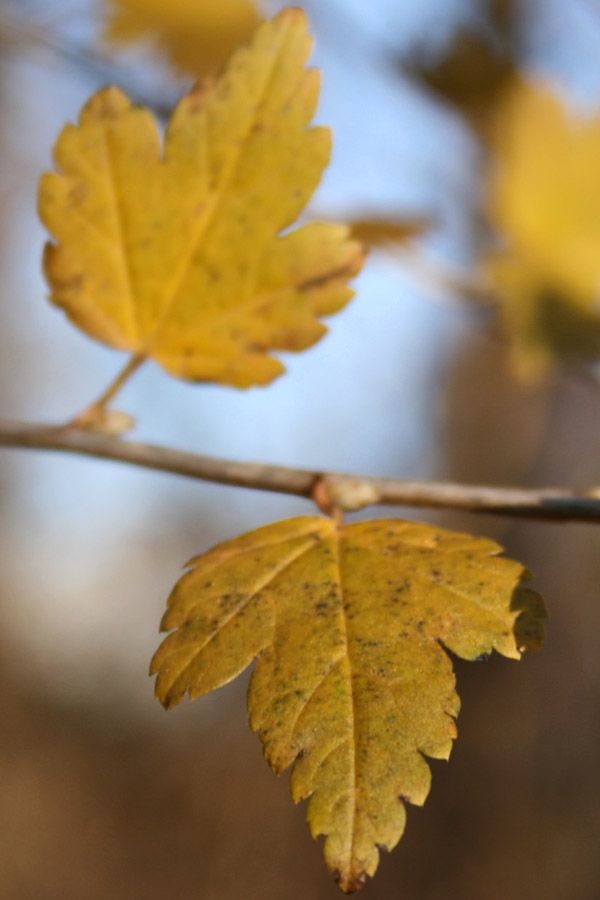
Alpine Currant (Ribes alpinum)
Alpine Currant, is a small deciduous shrub native to central and northern Europe from Finland and Norway south to the Alps and Pyrenees; in the south of its range, it is confined to high altitudes. It is scarce in western Europe, in Britain being confined to a small number of sites in northern England and Wales.
It grows to 2 m tall and 1.5 m broad, with an upright and dense shape. The bark is initially smooth and light grey, later it becomes brownish grey and eventually starts to flake off. The buds are scattered, compressed and light green to white. The leaves are palmate. The upper side of the leaves are dark green with scattered hair, while the bottom is light green. The male and female flowers are on distinct specimens. Both kinds of flowers are organized in clusters in the corners of the leaves, where the male's are the longest. The individual flowers are small and greenish-yellow. The fruit is red, clear and resembles a redcurrant, but has an insipid taste. The seeds germinate readily.
Source: en.wikipedia.org/wiki/Ribes_alpinum - 05.07.2011
Leaves in Autumn
When in autumn the leaves of the trees are falling, it seems to suggest itself, that lower temperatures, shorter daylight and the age of the leaves are the reason.
But the real reason for the falling of the leaves in autumn is, that the broadleaf trees respectively the bushes thereby protect themselves. In spring and summer the leaves are the food providers for the trees by functioning like a food factory. They produce nutrient from air, minerals, sunlight and water. From the bottom water and minerals are pumped in the leaves via the roots and the bole and chemically metabolised via sunrays.
With a microscope besides this in each leaf are tiny holes, called stomas, can be find, by which a part of the water is rendered as water vapour again. In autumn the productivity of the leaves decreases, because the trees have enough food supplies, for overcoming the cold season by a winter rest.
Prior to this the tree has to start a protective mechanism. The holes on the petioles, where the water was pumped through, will be closed with a hard and waterproof piece of cork. Therefore in autumn the leaves by and by fall down by drying up. When they would remain at the tree and furthermore render water vapour, still after the frozen bottom is no longer able to dispense water, the tree had to dry up and die back.






